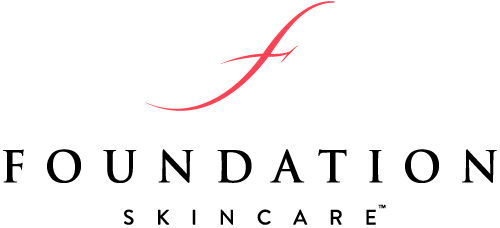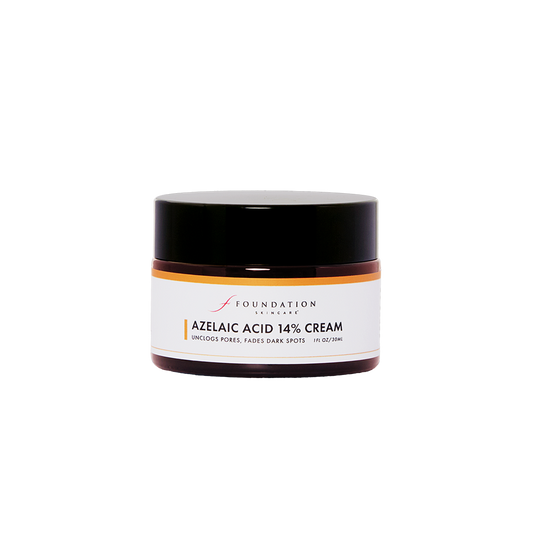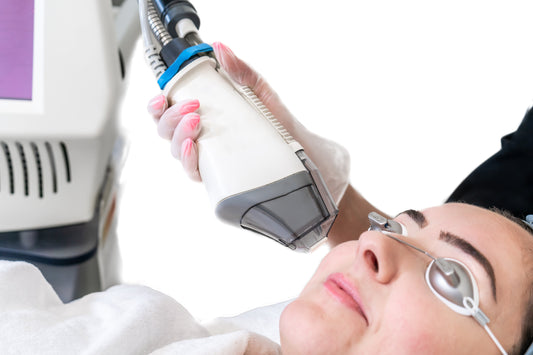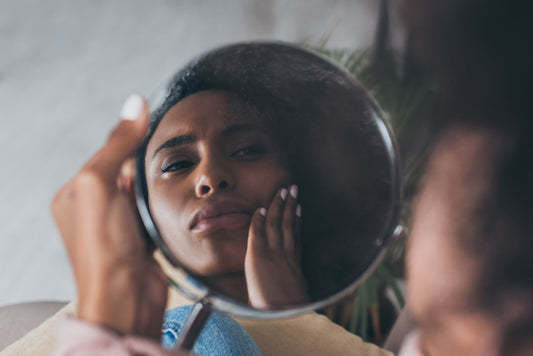Nothing makes you feel like a teenager more than a face full of blemishes, but there’s a difference between hormonal acne and inflammation in your 30s or 40s.
If your breakouts appear on your chin, cheeks, and forehead, accompanied by facial redness, burning, or visible blood vessels, you may have a chronic condition called papulopustular or inflammatory rosacea.1
Understanding Rosacea Pustules and Papules
Papules and pustules are blemishes caused by papulopustular rosacea. They are often accompanied by facial discoloration — redness in lighter skin and yellow or dusky brown in darker skin. Bumps are close together and may be hot to the touch.2
Papules are small, red bumps that vary in size and texture and resemble acne. Pustules are small bumps filled with white or yellowish pus. Both can be tender or painful.3
Severity of papulopustular rosacea is determined by the number of blemishes during an outbreak. People with severe rosacea can have 40 or more blemishes accompanied by raised red patches called plaques.4
Identifying Your Triggers
The first step in avoiding rosacea breakouts is to identify and avoid your triggers. Common triggers include:2
- Sunlight
- Extreme hot or cold weather
- Spicy foods and hot beverages
- Emotional stress
- Exercise
- Alcohol
- Foods with cinnamaldehyde, like cinnamon, citrus, tomatoes, or chocolate
- Hair products
- Some medications
To identify your rosacea triggers, keep a rosacea diary. This daily log helps you track your diet, the weather, your emotions, and activities like exercise, work tasks, and household chores. You also track the intensity and duration of any rosacea symptoms.5
Over time, you’ll be able to identify what triggers your rosacea flares.
Topical Treatments
Rosacea is a chronic condition with no cure. Treatment revolves around reducing inflammation and managing symptoms. The good news is that papulopustular rosacea is the easiest to treat.6
First-line rosacea treatments for blemishes are topical creams, gels, or foams. There are several recommended treatments for rosacea outbreaks.7
- Azelaic acid is available over the counter at under 15% concentration and is recommended to be applied after cleaning your face. It also reduces facial redness. Wait to apply moisturizer or make up until after it dries. Most over the counter azelaic acid formulas have a very weak concentration of it. Foundation Skincare’s Azelaic Acid 14% Cream offers the highest concentration you can get without a prescription and is formulated in a very hydrating cream that can offer relief without irritating skin.
- Encapsulated benzoyl peroxide cream, 5%, is an antiseptic treatment available by prescription. The microencapsulation slows absorption, reducing skin irritation that can occur with other benzoyl peroxide products. It can make you more sensitive to sunlight so it is important to wear sunscreen.
- Ivermectin is a prescription antiparasitic cream that reduces inflammation. It is recommended to avoid drinking alcohol while using it.
- Metronidazole is a prescription antibiotic that treats breakouts, discoloration, and bacteria. It is recommended to avoid drinking alcohol if you are taking this.
- Minocycline foam is available with a prescription and may cause red or dry skin, peeling, or itching.
- Sulfacetamide or sulfur lotion combines a prescription antibiotic with sulfur, which removes the top layer of dead skin.
Azelaic Acid 14% Cream
• Brightens skin, fades brown spots
• Unclogs pores, improves texture
Sale price
$45
Other Treatment Options
When topical treatments don’t work, your doctor may prescribe stronger treatments.3
- Low-dose minocycline or doxycycline fights inflammation and is safe to take for longer periods of time.
- Isotretinoin is usually only used in severe cases that are resistant to other treatments. It inhibits excess oil production, but has significant side effects, including dry lips and skin, sun sensitivity, muscle and joint pain, or depression. Don’t take it if you are pregnant.
- Antibiotics, at a regular dose, can be used for short periods to help reduce blemishes when other treatments have failed.
In addition to medical treatments and avoiding triggers, you may benefit from making changes to your diet, adding in more fiber, Omega-3 fatty acids, and antioxidants.8
Adjusting Your Skincare Routine
People with rosacea have sensitive skin and require special skin care. Here are some tips from the American Academy of Dermatology.9
- Cleaning
- Gently clean your face twice a day.
- Apply cleanser with your fingertips. Don’t use a washcloth or sponge. Rinse with warm water.
- Pat face dry with a clean cotton towel.
- Moisturize after washing your face. If you use a topical treatment, apply it before applying the moisturizer.
- Sun protection
- Use a broad-spectrum SPF 30+, water resistant sunscreen.
- Wear a hat and sunglasses with UV protection even when cloudy.
- Use sunscreen with zinc oxide or titanium dioxide.
- What to Avoid
- Products with alcohol, camphor, methol, glycolic acid, lactic acid, sodium lauryl sulfate (found in toothpaste and shampoo), and urea.
- Astringents or toners. Don’t exfoliate.
- Fragrance and unscented - choose fragrance free
- Use creams over gels and lotions.
- Grooming and Makeup Tips
- Test products on the underside of your arm or elbow for 7-10 days before using.
- Use water-based or powder makeup.
- Use a yellow-tinted concealer to mask discoloration in all skin tones. Green-tinted makeup camouflages redness.
- Shave carefully to avoid infection, irritation, or scarring.
- Don’t touch or pick the bumps.
- Clean items that regularly touch your face like your phone, helmets, sunglasses, or pillowcases.
- Calm inflamed skin with aloe vera, green tea, or oatmeal.
When to See a Dermatologist
Don’t hesitate to see your dermatologist if you have questions or concerns about your rosacea. They can recommend the best course of care and offer prescription options if your flareup is severe.
Visit immediately if you have a negative reaction to medication, symptoms worsen, or flares become more regular or severe.2
Because papulopustular rosacea is a chronic condition, you play a major role in reducing and managing outbreaks. Keeping track of your symptoms, knowing and avoiding your triggers, taking care of your skin with the best suited products will make you your best advocate and help you live more comfortably.
References:
-
https://nyulangone.org/conditions/rosacea/types
-
https://www.healthline.com/health/rosacea/papulopustular-rosacea
-
https://www.medicalnewstoday.com/articles/papulopustular-rosacea
-
https://www.rosacea.org/physicians/grading-system-for-rosacea/view-online
-
https://www.rosacea.org/patients/materials/coping-with-rosacea/identifying-rosacea-triggers
-
https://www.aafp.org/pubs/afp/issues/2009/0901/p461.html
-
https://www.aad.org/public/diseases/rosacea/treatment/diagnosis-treat
-
https://www.healthline.com/health/rosacea-natural-treatments
-
https://www.aad.org/public/diseases/rosacea/triggers/tips






